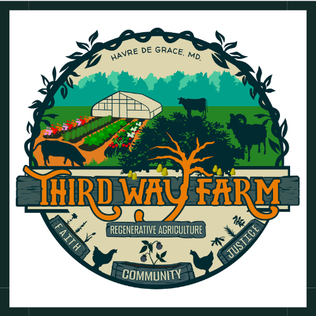|
3/13/2023 0 Comments The Animals are OutCurrently we have our largest sheep group, the ewes, on our pasture adjacent to Chapel Road. If any of you have been driving on that road for the last couple of weeks, you probably have noticed those little babies out there.
Well, have you noticed that they have been moving around? They do not stay in one paddock for more than one to two days. Soon enough they will be out of that field entirely, on to fresh forage. And you might be wondering how and why we do this. It would be much easier to simply leave all the animals in one designated spot. That way we could just build a permanent fence round them, maybe even have a water source right there. Which would mean no more lugging around those hefty 5 gallon buckets. This practice in the regenerative agriculture sphere is called rotational grazing. And yes, it is exactly what it sounds like. We rotate the animals around on the pastures constantly. We do this with movable electric fencing. We utilize two kinds: net fencing for chickens and sheep, and reel-based fencing for cattle and pigs. Rotating the animals is important for their health because they will always be given fresh grass to eat (well not so much in the winter months when we supplement with hay). Also, since they move often, they will not be exposed to their own excrements which can harbor parasites and cause illness. But providing fresh forage to our livestock is not the only benefit of this technique. It is vital for encouraging thriving land. This is because it gives the land time to rest and regenerate after the animals have munched down on all the plants in any given paddock. As the animals are on the move, they will not have the opportunity to overgraze the pastures. When pastures are overgrazed, they become weaker and more susceptible to erosion. This is because they have fewer leaves to capture sunlight to turn into energy and help encourage thriving root systems. On the other hand, when pastures are optimally managed and given time to rest, the plants are ready to sequester more carbon, develop strong roots, and resist erosion. Another benefit of this system is minimizing costs for us farmers. There is no need to spend exorbitant amounts of time or money on installing permanent fencing systems. Although, I’m not going to lie, sometimes I wish we had some permanent perimeter fencing for those times when the animals escape. The moveable fencing has many advantages but it also comes with the risk that we may fail to dot all our I’s and cross all our T’s when setting them up. When this happens, animals escape. And they can be a pain to corral back in. You all remember what happened with Mildred, right? She booked it through our net fencing and ran all the way to Route 40. Rotational grazing also saves money on inputs that conventional farm systems rely heavily on. This includes herbicides, pesticides, and fertilizer. How is that possible? Well, rotational grazing increases the overall productivity of the land and when Mother Nature is healthy, she can take care of herself. For example, grazing various species of ruminants (which many different animals are on any one piece of land in the wild) on the same pasture is a good approach for weed management because they find different plants palatable. So having a combination of these animals may help minimize many weed species. Finally, the animals are healthier overall because they are eating what their bodies are designed to consume, not being fed grain. They also get to move around much more than they would in a factory farm. They live happy lives. And, of course, their time at Third Way is limited because all those little piggies do make it to market. Since they live happy, healthy lives, the meat we eat is more nutritious than conventionally raised meat. You could dive deeper into the importance of rotational grazing, but I just wanted to share with you a basic overview of why it's such a vital component of regenerative agriculture. I encourage you to read more about it and support farmers who are committed to this way of raising animals. Be on the look out when you drive by the farm next time and see if you notice the animals moving around. Until next time, Kate
0 Comments
Leave a Reply. |
The Return of RobinhoodNestled into a hidden woods on Robinhood Road, in Havre de Grace Maryland, exists a picturesque farm community; a place of green pastures, beautiful woodlands, and colorful fruits and vegetables. And in this thriving place, a place called Third Way Farm, there is also a community on a mission to build a better world through a holistic and regenerative approach to agriculture; a mission grounded in our faith and our belief in a world where all have a place at the table. Where, when we give back to the land, and to one another, all of creation thrives. Archives
January 2024
Categories |
Barn Store Hours
Tuesdays 3-5:30pm
Fridays 3-5:30pm
601 Robinhood Road
Havre de Grace, Maryland 21078
717-669-1351
 RSS Feed
RSS Feed
